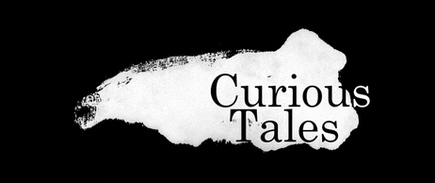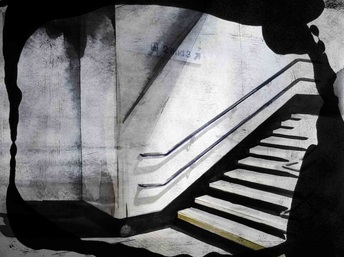Until May last year my experience of Barrow-in-Furness had been fleeting, rushed changes at the train station. Sprinting through the underpass with too much luggage to make a connection north up the west coast of Cumbria or south to Manchester and beyond, always transitory, somewhere I needed to pass through to get somewhere else. Over the last decade or so it has become a familiar and personal non-place to me, missing my connection, waiting in the sparse entrance, an icy sea wind cutting through winter layers – always somewhere I travelled alone to visit the people I loved.
Barrow is situated in an isolated jutting peninsula on the North West coast, a purpose-built industrial town sandwiched between power stations, off-shore wind farms and the Cumbrian fells, partially surrounded by sinking sands shifting between Morecambe Bay and the Ravenglass estuary.
For my first real visit to Barrow last spring, I didn’t take the train, I drove from further up the Cumbrian coast, south over the barren moorland of Corney Fell, where on reaching the highest point I had a clear view of the Irish Sea, the wind farms and the horizon blurring land, sea and sky. All the way to Barrow.
On the approach into the town there is a sense of industrial layers. A still functioning Victorian brickworks on the northern outskirts, the modern seemingly unpopulated cuboid industrial estates and leviathan sheds rising out of the centre, mocking the brick terraced houses at their base and imitating the mountain landscape.
Heading out of the town towards the docks, the roads are wide and straight, it becomes difficult to tell which warehouse is in use, which gas tower, which hulking metal structure. Piers and pillboxes on the beach, stumps that would have propped up a bridge look like ancient monolithic monuments.
I took photographs to try to remember colour, structures and where things were in relation to the sea or the mountains, but the Barrow landscape documents itself. Its memory washes up on the beaches and seeps out from under flaking paintwork, badly made facades or fading signage. After walking for hours, I stopped taking photographs and instead began to absorb.
The work for The Barrow Rapture became black, white, grey and yellow. Black and white like the drawings for a graphic novel. Grey for the hazy horizon and concrete architecture. Yellow, for the gorse bushes by the docks, for the edging on the train station steps, for the seagull’s beak and for the line of sunlight between sea and sky. Fading grey, yellow, grey. The landscape becoming more and more yellow. The yellow becoming symbolic of something more spiritual and ethereal. Barrow becoming a medium between this world and another.
And so the story begins and ends in transition, as we all do, with a voyage and a crossing. The protagonist steps off the train at Barrow-in-Furness station and walks through the underpass alone.
Beth Ward
Barrow is situated in an isolated jutting peninsula on the North West coast, a purpose-built industrial town sandwiched between power stations, off-shore wind farms and the Cumbrian fells, partially surrounded by sinking sands shifting between Morecambe Bay and the Ravenglass estuary.
For my first real visit to Barrow last spring, I didn’t take the train, I drove from further up the Cumbrian coast, south over the barren moorland of Corney Fell, where on reaching the highest point I had a clear view of the Irish Sea, the wind farms and the horizon blurring land, sea and sky. All the way to Barrow.
On the approach into the town there is a sense of industrial layers. A still functioning Victorian brickworks on the northern outskirts, the modern seemingly unpopulated cuboid industrial estates and leviathan sheds rising out of the centre, mocking the brick terraced houses at their base and imitating the mountain landscape.
Heading out of the town towards the docks, the roads are wide and straight, it becomes difficult to tell which warehouse is in use, which gas tower, which hulking metal structure. Piers and pillboxes on the beach, stumps that would have propped up a bridge look like ancient monolithic monuments.
I took photographs to try to remember colour, structures and where things were in relation to the sea or the mountains, but the Barrow landscape documents itself. Its memory washes up on the beaches and seeps out from under flaking paintwork, badly made facades or fading signage. After walking for hours, I stopped taking photographs and instead began to absorb.
The work for The Barrow Rapture became black, white, grey and yellow. Black and white like the drawings for a graphic novel. Grey for the hazy horizon and concrete architecture. Yellow, for the gorse bushes by the docks, for the edging on the train station steps, for the seagull’s beak and for the line of sunlight between sea and sky. Fading grey, yellow, grey. The landscape becoming more and more yellow. The yellow becoming symbolic of something more spiritual and ethereal. Barrow becoming a medium between this world and another.
And so the story begins and ends in transition, as we all do, with a voyage and a crossing. The protagonist steps off the train at Barrow-in-Furness station and walks through the underpass alone.
Beth Ward


 RSS Feed
RSS Feed
